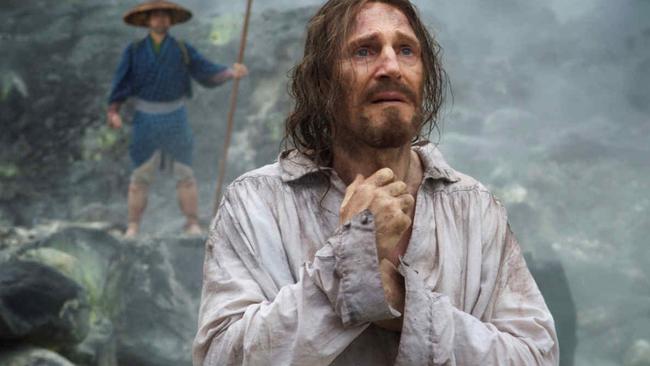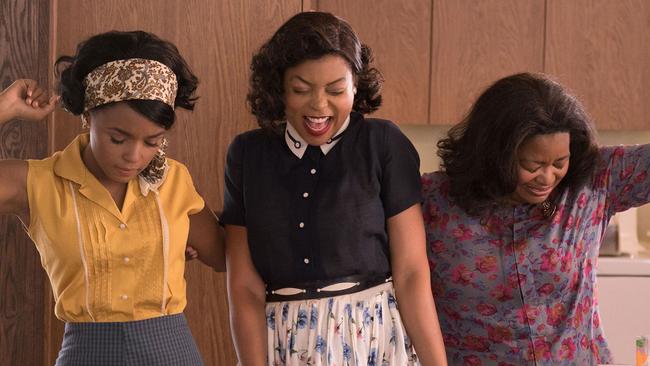Scorsese’s Silence; Hidden Figures; Lo and Behold; Winter at Wesbeth
Martin Scorsese’s love/hate relationship with the church has been given another outing in his new film, Silence.

Religious fundamentalism is a topical subject and who better than Martin Scorsese to remind us that in some countries and at some periods of history it was Christianity that was deemed dangerous and subversive by the authorities. Throughout his distinguished career as a filmmaker, Scorsese has demonstrated a love-hate relationship with the church, dating back to his youth when he toyed with the idea of entering the priesthood. Alongside his extraordinary films about crime and punishment — Taxi Driver (1976), Goodfellas (1990), Casino (1995), Gangs of New York (2002) and The Departed (2006) — Scorsese has grappled with religious themes, controversially in The Last Temptation of Christ (1988), and probingly in Kundun (1997), which was about the early life of the Dalai Lama. Now comes Silence, the second film adaptation of Shusaku Endo’s 1966 novel of the same name, previously filmed in Japan in 1971 by Masahiro Shinoda.
The title refers to the silence of God in the face of human suffering — Ingmar Bergman, another great director fascinated with religious themes, used the same title for a film he made in 1963. Bergman’s challenging film was set in a present where there seemed to be no place for God, but Endo’s novel is set in the 17th century, when Christian missionaries were attempting to convert the Japanese to Catholicism and the authorities reacted by imposing the Edict of Expulsion (1614), which was designed to outlaw what was seen as an alien sect but also to control the activities of foreigners in the country.
The film begins in 1633 with a chilling scene in which Japan’s equivalent of the Inquisition is executing — painfully — several missionaries in the presence of Father Ferreira (Liam Neeson), a Portuguese priest. Seven years later, two young priests, Father Rodrigues (Andrew Garfield) and Father Garupe (Adam Driver), persuade their Jesuit superior (Ciaran Hinds) to grant them permission to travel to Japan to support the Christian converts there and to locate Father Ferreira, from whom no recent word has been heard.
The two men arrive on the coast of Japan in 1643 and hide in a small hut by the sea. From here they succeed in making contact with some converts with the help of an interpreter (Tadanobu Asano). There’s no denying the dedication and courage of these missionaries, or of the converts who, if captured by the authorities, inevitably suffer a tragic and brutal fate, unless they apostatise and renounce their faith.
Scorsese has filmed this grim saga with his customary brilliance. Every element of the film impresses, including the screenplay adaptation by Scorsese and Jay Cocks, the photography by Rodrigo Prieto and production design of Dante Ferretti, and the flawless performances from a cast clearly devoted to the director’s vision. There’s a particularly fine contribution from Issey Ogata, who plays the Inquisitor whose ruthlessness is surprisingly leavened by charm and an unusual sense of humour.
Silence has been a dream project for the director for many years, and apparently proved to be an arduous production on many levels. If the result isn’t quite a triumph that’s because the basic material is so uncompromising; you can admire the film without embracing it (the same can be said of the Shinoda version).

Hidden Figures is a film with its heart well and truly in the right place, and a great story to tell. Three African-American women find work at NASA headquarters in 1961 in the period leading up to John Glenn’s successful orbit of the Earth. Although subjected to the racist and incredibly petty restrictions of the time, these women contributed more than their fair share to America’s successful space program. It’s a story you would think can’t miss.
Katherine (Taraji P. Henson) is a widow with three daughters — and a mathematical genius. Dorothy (Octavia Spencer) manages an African-American unit — they were called “coloureds” then — within NASA but she’s denied the status and salary of a supervisor. Mary (Janelle Monae), who has a supportive husband, is similarly frustrated by the race laws in place.
Unfortunately, director Theodore Melfi, who co-scripted with Allison Schroeder (based on a book by Margot Lee Shetterly), is not the most subtle of directors. As he proved in his previous film, St Vincent, he’s good with actors and is a competent storyteller, but he can’t resist underlining things that are already obvious. For example, he makes far too much of the fact poor Katherine, who finds herself working in a “white” section of NASA under manager Al Harrison (Kevin Costner), is forbidden to use the white toilet so is forced to walk, or sometimes run, to the other side of the facility to use a toilet designated for coloureds. Depicting this humiliation once makes for good drama, but for Melfi once is not enough. It’s disappointing when an empowering true story like this one is milked for obvious cliches.
Australia’s Mandy Walker photographed the film with her usual expertise, giving it an authentically period look and the film is yet another timely reminder of the prejudices that held sway in the US not so long ago.
Two interesting documentary features getting extremely limited release are worthy of attention. The latest from the prolific and eclectic Werner Herzog is Lo and Behold: Reveries of the Connected World in which he explores the internet, past, present and future. Divided into 10 chapters, the film starts by introducing the machine that started it all in 1969. As with many Herzog films the results are complex, endlessly fascinating, sometimes disturbing and often weird. Some of the questions he poses (Can the internet dream? Will robots become filmmakers?) are likely to spark lively debates.
In contrast, Australian filmmaker Rohan’s Spong’s Winter at Westbeth delves into the lives of some of the inhabitants of New York’s Westbeth Artists Housing, a Greenwich Village home for artists established in 1970. Spong’s chief interest is in three long-time occupants: 82-year-old poet Ilsa Gilbert, 75-year-old dancer Dudley Williams (who died soon after filming was completed) and 95-year-old filmmaker Edith Stephen, whose personality and looks are similar to those of Ruth Gordon in Harold and Maude. These are engaging and inspirational people and Spong’s well-made film, which is charming and delightful, does them full justice.
Silence (MA15+)
4 stars
Limited national release
Hidden Figures (PG)
3 stars
National release
Lo and Behold: Reveries of the Connected World (M)
3.5 stars
Melbourne only
Winter at Westbeth (PG)
3.5 stars
Limited release



To join the conversation, please log in. Don't have an account? Register
Join the conversation, you are commenting as Logout